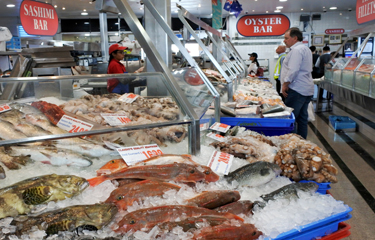An analysis of 44 studies by The Guardian has found that 36 percent of seafood samples from restaurants, fishmongers, and supermarkets in more than 30 countries were mislabeled.
The analysis, done as part of The Guardian’s “Seascape” series targeting the state of the world’s oceans, examined past studies performed by scientists and nonprofit organizations like Oceana and the Environmental Justice Foundation. According to The Guardian, the analysis found that U.S. and Canada has a high level of seafood fraud, greater than 35 percent.
Seafood being mislabeled has been an ongoing issue. An Oceana report in 2016 found that seafood fraud was a problem worldwide, and more recent deep-dives by nonprofits into specific countries has found that places like Canada and South Korea still have issues with seafood mislabeling. Other reports, like one from the New York State Attorney General’s Office, also found “rampant” seafood mislabeling at grocers.
“Many of the studies used relatively new DNA analysis techniques,” The Guardian article states. “In one comparison of sales of fish labeled ‘snapper’ by fishmongers, supermarkets, and restaurants in Canada, the U.S., the U.K., Singapore, Australia and New Zealand, researchers found mislabeling in about 40 percent of fish tested. The U.K. and Canada had the highest rates of mislabeling in that study, at 55 percent, followed by the U.S. at 38 percent.”
Due to the complex nature of seafood supply chains, it is “highly vulnerable to mislabeling,” The Guardian wrote.
A counter-study performed by the Marine Stewardship Council found that the mislabeling of its certified seafood is lower than the average of most other studies. The Guardian also acknowledged many of the studies target species known to be frequently mislabeled.
“The studies in question sometimes target species known to be problematic, meaning it is inaccurate to conclude that 36 percent of all global seafood is necessarily mislabeled,” the article states. “The studies also use different methodologies and samples. Nor are fish always deliberately mislabeled – although the huge majority of substitutions involved lower-priced fish replacing higher-priced ones, indicating fraud rather than carelessness.”
Overall, The Guardian’s analysis found that restaurants appear to have the highest mislabeling rates. The highest mislabeling rates in restaurants occurred in Spain, Iceland, Finland, and Germany, with fish such as dusky grouper, butterfish, perch, sole, bluefin, and yellowfin tuna having a 50 percent chance of being mislabeled at many restaurants.
Photo courtesy of ChameleonsEye/Shutterstock







